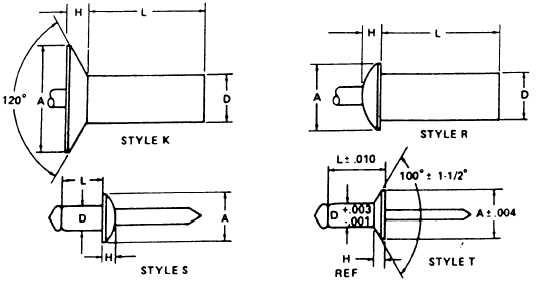TM 10-5411-207-14
3-8.
General (cont).
If nature of
high letters
CAUTION:
NOTE
damage warrants, print a caution notice using 4-inch
on all outside walls of the shelter as follows:
DAMAGED SHELTER. DO NOT SLING LIFT.
Coat threads of all screws and bolts with sealer before installing.
Fill rivet and rivnut holes with sealer before using.
Unless otherwise noted, all procedures can be performed by one
person using standard tools listed in Appendix B, Section III.
3-9.
General Repair Procedures.
The procedures described in this paragraph are
general procedures that may be needed during repair or replacement of many of the shelter
components.
Wherever these general procedures apply, they are referenced at the appropriate
point in the specific maintenance procedure paragraph.
a.
Blind Rivet Installation and Removal. Blind rivets are used in locations where only
one side of the area to be worked on is accessible.
Blind pop rivets must be used in the
shelter foam and beam panels, since the hammering required to install conventional rivets
would damage the material.
The types of rivets used in the shelter are shown in Figure 3-3
and described in Table 3-2. When installing floor patches, countersunk head rivets (styles K
and T) are preferred, but dome head rivets (styles R and S) are an acceptable alternate. When
installing interior wall patches, countersunk head rivets shall be used in any location in which
dome head rivets will interfere with the proper installation of equipment. Closed end rivets
(styles K and R) must be used for exterior repairs and floor repairs--to prevent moisture and
dirt from entering panels.
NOTE
Open end rivets may be used only where moisture and dirt
entrance will not affect the shelter.
Figure 3-3. Rivet Types.
3-8

